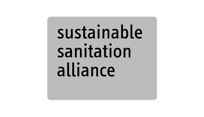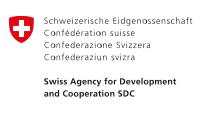Throughout the SWM service chain, workers are in contact with waste materials that could be hazardous to their health. The public and private individuals can also be exposed to risk from the collection and transport of waste and unauthorised entry to SWM facilities. Effective operating procedures, robust controls and appropriate occupational safety training help to protect workers and communities from risks to their health and safety. High safety standards protect workers and minimise the risk of accidents and health hazards. This can reduce absenteeism which in turn fosters stability and the quality of the service provided. As hazards are present throughout the SWM chain, risk assessments should be conducted for each specific activity and facility P.3.
Waste handlers are likely to be in close or direct contact with waste materials. Although hazardous wastes W.2, including e-waste W.7, waste from medical facilities W.1 or chemical substances must not be deposited with ordinary domestic waste, their presence should be assumed. Similarly, it should be assumed that waste may be contaminated by human excreta or body fluids, both of which carry pathogens. Even without pathogens or corrosive, flammable, reactive or toxic substances, waste materials can still pose a significant health risk as sharp and pointed items may be hidden in the waste matrix. In summary, for workers’ safety, precautions should be taken for the following hazards: chemical (corrosive, flammable, reactive and toxic substances), biological (infectious materials), sharps and puncture risks (needles, blades, broken glass), radioactive materials and e-waste.
Hierarchy of Control
There are several ways to control risks associated with waste materials and waste management. The ‘hierarchy of control’ is a method of identifying and prioritising safety measures; it can be applied to SWM. The hierarchy lists the following steps in order of priority, from most to least effective:
1. Elimination: the first and most effective step to protect workers and the community is to physically remove the hazards. Incorrectly deposited hazardous materials are removed from domestic solid waste and separately handled and disposed of according to their characteristics P.1. If possible, sharp or pointed items should be safely encapsulated (for example in sturdy plastic containers).
2. Substitution: refers to making changes to equipment or processes to reduce hazards. For example, preventing the reversing of vehicles, or selecting safer waste processing equipment.
3. Engineering Controls: engineering controls include making physical changes in the workplace, such as modifying equipment and barriers to reduce the risk of exposure. Examples include reducing the loading height in vehicles, using automatic loading vehicles to avoid strenuous lifting of heavy containers, or adding safety shields to machinery such as shredders.
4. Administrative Controls: these are procedures and policies to ensure that operations are carried out safely, facilities are designed to be safe and equipped with warning mechanisms and signs and staff receive relevant training. Safety controls include equipment checks and maintenance and clear work specifications and instructions. Examples of warning mechanisms are signs, horns or safety boundaries around machinery. Staff training should cover the safe use of equipment and execution of work procedures as well as occupational safety measures such as hygiene (for instance, not touching the face with dirty hands or clothes), and personal hygiene measures before breaks and at the end of shifts. Protection from sun and heat, rest periods and the importance of hydration should also be addressed. Workplaces must have facilities for personal cleaning and changing into work clothes and provide first aid kits. Staff should be offered regular health check-ups and relevant immunisation (such as hepatitis A and B, polio, tetanus, diphtheria and typhoid fever) based on recommendations from health professionals.
5. Personal Protective Equipment (PPE): is the ‘last line of defence’ and should be used along with stringent work procedures and controls to limit exposure to waste materials. PPE is equipment or gear designed to be worn or used to protect the body from severe injuries and illnesses. All workers should be provided with PPE and use this equipment systematically. The appropriate type of PPE depends on the tasks and responsibilities of workers - the drivers, waste collectors, or waste handlers at disposal or treatment facilities. In general, the following PPE is advised but should be adjusted on a case-by-case basis:
- Thick, hazard-resistant long clothing or overalls
- Reflective vest
- Impermeable and hazard-resistant working gloves
- Steel-toed and/or steel mid-sole impermeable boots
- Protective goggles
- Respiratory protection equipment
- Hard hats and/or caps
- Hearing protection
- Raincoat
Personal Protective Equipment
6. Hygiene Facilities: as workers will be in close contact with waste, it is important to establish a clear barrier between the work and non-work environment. Specific clothes should be used at work; workers should shower before changing into non-working clothes. Workwear should remain at the work site and be regularly cleaned.
Workers should have access to appropriate hygiene facilities. The following hygiene facilities should be available whenever possible:
- Changing rooms with washing spaces or showers
- PPE washing and drying facilities
- Toilets
- Handwashing stations that always have soap available
- Clean spaces away from waste for breaks and lunch
Selected References
Training module on occupational health and safety (general introduction and focus on hazardous healthcare waste)
UNDP, GEF, WHO, Health Care Without Harm, UIC (2020): Occupational Health and Safety







